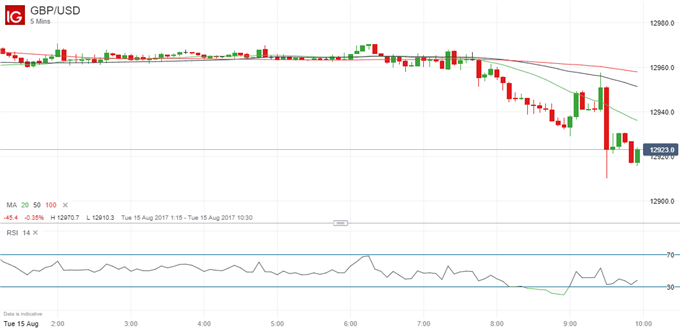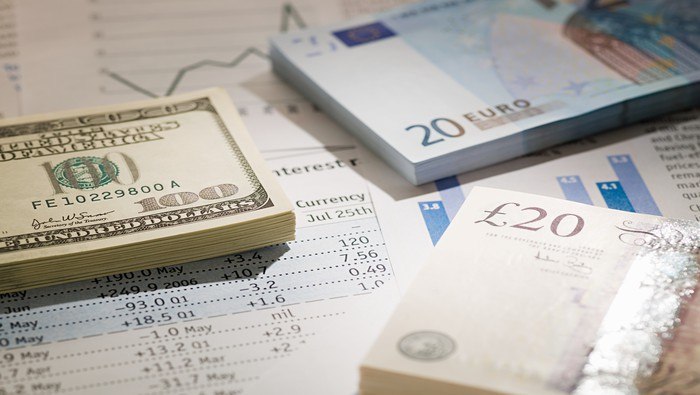Talking Points
- UK inflation stayed at 2.6% in July rather than rising to 2.7% as economists had predicted.
- That makes a near-term tightening of UK monetary policy less likely and has weakened the British Pound.
Check out our new Trading Guides for a longer-term view on GBP: they’re free and have been updated for the third quarter of 2017
The British Pound fell back in European trading Tuesday after news that the headline CPI measure of UK inflation stayed at 2.6% year/year in July rather than increasing to 2.7% as economists had forecast. Core CPI was also unchanged, at 2.4% rather than rising to 2.5% as predicted.
The news should calm nerves on the Bank of England’s monetary policy and make a near-term tightening of UK monetary policy less necessary. While inflation remains above the Bank’s 2% target, the UK economy has not been growing strongly – making a rates decision difficult.
In the markets, GBP/USD eased back to its lowest since July 13, while EUR/GBP strengthened.
Chart: GBP/USD Five-Minute Timeframe (August 15, 2017)

Elsewhere, the FTSE 100 rose 0.37% to 7,381 as the inverse correlation between the currency and London stocks remained in place.
The positive news on consumer prices was echoed in the data on producer prices, which suggest that there is less inflation in the pipeline. The input producer price index grew by 6.5% in the 12 months to July 2017, down from 10.0% in the 12 months to June 2017. The output producer price index grew by 3.2% in the 12 months to July 2017, down from 3.3% in the 12 months to June 2017.
--- Written by Martin Essex, Analyst and Editor
To contact Martin, email him at martin.essex@ig.com
Follow Martin on Twitter @MartinSEssex
For help to trade profitably, check out the IG Client Sentiment data
Join analysts Christopher Vecchio, Nick Cawley and Martin Essex for the European Desk Roundtable at 1000 GMT. You can sign up here





